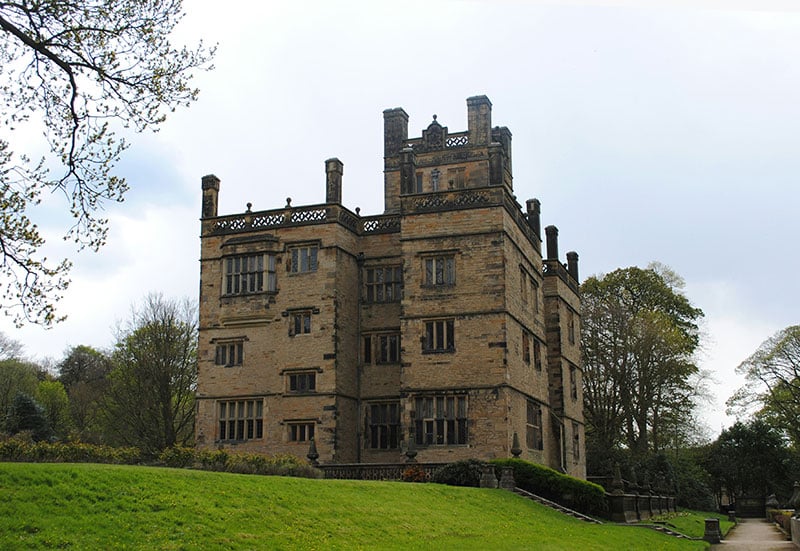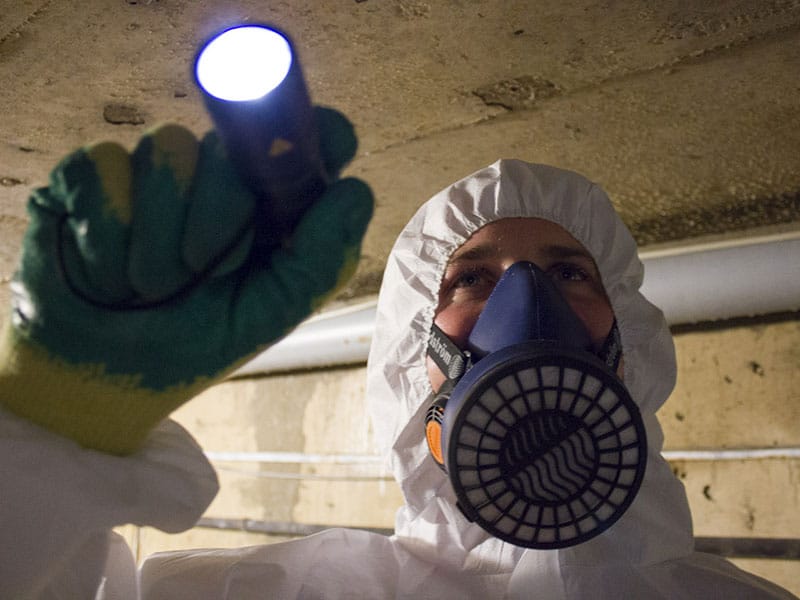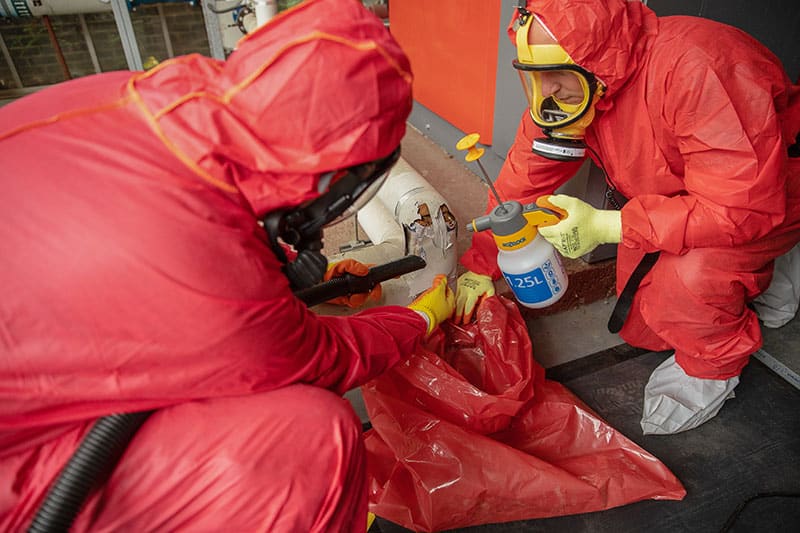How do I protect an historic heritage building during asbestos removal in the UK?
The subject of asbestos in the UK’s historic and/or listed buildings – whether those structures date back to the 20th, 19th, 18th, or even earlier centuries – can sometimes be a source of confusion.
The owners and managers of such buildings may wrongly assume their property is “too old” to contain asbestos. Others may be unsure about the regulatory requirements for the management of any asbestos-containing materials (ACMs) that they do know to be present in their building.
So, in this article, we will take a closer look at how the owners and managers of heritage premises can better manage – and, if needed, remove – asbestos.
As part of this, we will consider how the presence of asbestos may complicate restoration projects, the health and safety risks asbestos can pose, and – of course – the legal obligations that the owners and managers of such buildings need to comply with.
Why is asbestos a concern in heritage restoration?
If you are reading this with a view to carrying out safe, legally compliant, and effective restoration work at a historic property for which you are responsible, you will need to be mindful of the asbestos risks the building could pose, and to act accordingly.
Asbestos first began to be commercially mined during the mid-19th century. Regarded for many years as a “wonder material” on account of its relatively easy availability, affordability, fire resistance, and effectiveness as an insulator, the material went on to be incorporated into thousands of building products.
Those products encompassed the likes of asbestos insulating board (AIB), asbestos cement roof tiles, asbestos vinyl floor tiles, textured decorative coatings, and many more. For the period of peak asbestos use through the bulk of the 20th century, it wasn’t merely new-build properties that had ACMs incorporated into them – many older buildings undergoing modernisation were also subject to the use of asbestos.
Examples of such modernisation over the years included the fitting of gas and oil heating systems using ACMs (in place of the previous use of solid fuel like wood and coal), and electrical installations (capitalising on the fact that most forms of asbestos do not conduct electricity).
Only in 1999, was the use of all types of asbestos in the UK banned altogether. So, if you are responsible for any premises constructed or renovated before the year 2000, you must presume it contains asbestos, unless there is strong evidence to indicate otherwise.
This, in turn, will necessitate you taking great care with any restoration work to make sure any ACMs in your building are not accidentally disturbed. Any such accidental disturbance could cause the release of loose asbestos fibres.
When these released asbestos fibres are subsequently swallowed or breathed in, they can heighten the risk of the exposed individual developing a potentially fatal health condition – such as mesothelioma or asbestos-related lung cancer – many years later.
What are the first steps in identifying asbestos in heritage buildings?
If you are an individual in charge of maintaining a non-domestic premises in Great Britain, you will be classed as a “dutyholder” under Regulation 4 of the Control of Asbestos Regulations 2012 (CAR 2012). A key element of this duty will be a requirement for you to take reasonable steps to determine the asbestos situation in your property, including the location, amount, and condition of any ACMs.
The above legal obligation applies just as strongly to those who manage and maintain heritage buildings, as it does to premises that were relatively recently constructed.
However, there are certain other factors that you may need to bear in mind as you take the initial steps of identifying ACMs in your heritage building:
Arranging initial surveys and inspections
As is the case with any other property dating back to before the year 2000, a professional survey is the typical means of determining the asbestos situation in a heritage building.
A management survey is the type of asbestos survey typically carried out to help with the management of ACMs during the normal occupation and use of the given premises. It should encompass a broad range of areas of the property, including – but not limited to – all rooms, corridors, stairs, and basements, as well as external areas such as roofs, windows, and gutters.
One potential issue that can arise with heritage buildings is that certain elements of the property may be more vulnerable to harm – and the loss of heritage value – if attempts are made to remove ACMs. So, you should only arrange for any asbestos management work in your property after consulting with both conservation officers and experts in asbestos management.
The information gathered through an asbestos survey will enable an asbestos register and subsequent asbestos management plan to be created, in line with your legal obligations as a dutyholder.
Historical research
There may be pre-existing records and documentation in relation to your historical building, that could assist you in determining whether asbestos is likely to be present. These could encompass the likes of building plans, construction records, and/or documentation from past renovations of the property that might indicate whether ACMs were used.
Non-destructive testing methods
While asbestos management surveys are typically non-destructive, another popular type of asbestos survey – the refurbishment or demolition survey – is destructive. This, latter form of asbestos survey is designed to be carried out at buildings where refurbishment or demolition work is set to take place. It therefore aims to much more aggressively penetrate the fabric of the given building, so that the most accurate and in-depth survey results can be achieved.
Many heritage properties, however, will be especially vulnerable to meaningful damage if destructive methods are used.
So, when you are looking to hire an asbestos surveyor to test your older building for asbestos, you may be well-advised to discuss with them the non-destructive methods that they could use to minimise risk to the property. They may, for instance, be able to use X-ray fluorescence (XRP) analysis to detect whether asbestos is present without causing damage to the material.
How is asbestos safely removed from heritage buildings?
Great care will need to be taken when removing asbestos from any buildings that are particularly old. One of the most important steps in this will be considering whether any given asbestos needs to be removed, or should be removed, at all.
There is no automatic legal requirement for ACMs to be removed from a particular building in Great Britain merely because the substance is found to exist there. It might even be the case that if certain ACMs are removed from a heritage building, the structural integrity of the building could be put at risk. So, you may need to consider alternative courses of action, such as repair and/or encapsulation of the materials.
Putting aside the legal requirements for asbestos removal – as we elaborate on further below – your decision on whether to remove any given ACMs from your premises will likely depend on such factors as the condition of the material, and the likelihood of it being disturbed in the future.
Once your property has been surveyed, conducting a risk assessment will enable you to consider these factors and assess the overall risk posed by ACMs to both occupants and workers. The subsequent asbestos management plan will need to set out how the ACMs will be safely managed, including removal if this is judged to be necessary.
If it is ultimately decided that certain asbestos materials will need to be removed, you are strongly urged to hire a professional and licensed asbestos removal contractor to carry out this task.
The individual or organisation that you hire will likely use the following methods to ensure the safest possible asbestos removal project:
- Wearing appropriate personal protective equipment (PPE) when working around and/or directly handling ACMs
- Ensuring the area is as well-ventilated as possible to help minimise the concentration of any airborne asbestos fibres
- Wetting the ACMs with a fine mist of water prior to removing them, to suppress the fibres from being released into the air
- Containing the area where ACMs are to be removed by sealing it off from the rest of the building. This is typically achieved through the use of plastic sheeting, tape, and warning signs to alert anyone nearby that asbestos removal work is being carried out
- Disposing of asbestos waste in accordance with the UK’s stringent regulatory requirements
- Meticulously cleaning the space after asbestos removal to eradicate any remaining asbestos particles
- Having regular asbestos air testing and monitoring undertaken during and after asbestos removal, to measure the concentration of asbestos fibres in and near the work area.
What are the legal and regulatory requirements for asbestos removal in the UK?
To reiterate what we stated above: there is no automatic legal requirement for any and all ACMs found in a UK building to be removed. It may be possible to simply leave the given asbestos material in place, and to monitor and manage it over time.
If, however, you do decide to have any ACMs removed from your heritage building due to the risk you judge them to pose, this will need to be done in compliance with the UK’s stringent asbestos legislation, including CAR 2012.
You should also check whether any asbestos removal task that you intend to have carried out will need to be done by someone who is licensed by the UK Health and Safety Executive (HSE). As we have explained in the past, it isn’t always the case that asbestos removal requires a licence; nonetheless, we strongly recommend the use of a licensed contractor.
Another fundamental factor to account for if you are considering having asbestos removed from your older building in the UK, is whether the property is listed.
If your property has, indeed, been listed as being of special architectural or historical interest under Section 1 of the Planning (Listed Building and Conservation Areas) Act 1990, and you intend to carry out works that could impact on the fabric of the building, it will be necessary to obtain “Listed Building Consent” prior to work commencing.
If you need to obtain this consent, the local planning authority will have the right to refuse consent unless it can be demonstrated that any harm or loss caused by the work to the listed building is required in order to achieve substantial public benefit that outweighs harm or loss to the heritage value.
What are the best practices for ongoing asbestos management in heritage sites?
The management of asbestos is a historic building is not a one-off act. Regular inspections and maintenance will be required over time to help address the risks that any asbestos materials in your property may pose.
This may include having your asbestos register and asbestos management plan updated over time in response to any significant changes at the building, new findings, and/or regulatory changes. Ongoing education and training on asbestos will also greatly help staff and contractors working at your heritage building to continue managing asbestos safely.
Conclusion: what is the future of asbestos management in heritage restoration?
As the asbestos that still exists in heritage buildings up and down the UK continues to age, there could be significant challenges in managing this material in ways that keep the occupants and users of such premises safe.
It also cannot be ruled out that further government initiatives and regulatory changes may come on stream, with implications for how asbestos is managed in heritage properties.
To learn more about how Oracle Solutions’ experts could aid your efforts to manage asbestos at a historic building in the UK, and to request a quote, please feel free to contact us today.

Written by Callum McDonald
Callum McDonald is an expert in asbestos quality management, ensuring rigorous adherence to regulations and high-quality standards in removal projects. His focus on enhancing quality and client satisfaction makes him a crucial asset in safety and compliance within the field. Callum's expertise in technical support and oversight of licensed works underscores his commitment to excellence in asbestos management, providing invaluable guidance to clients in this specialised area.



